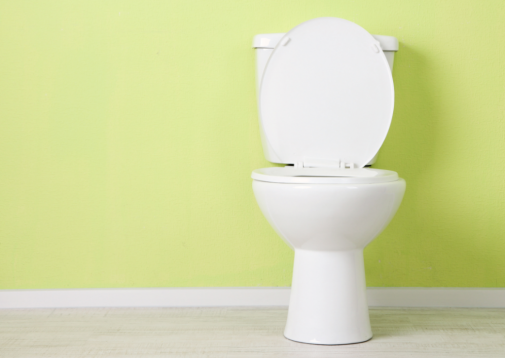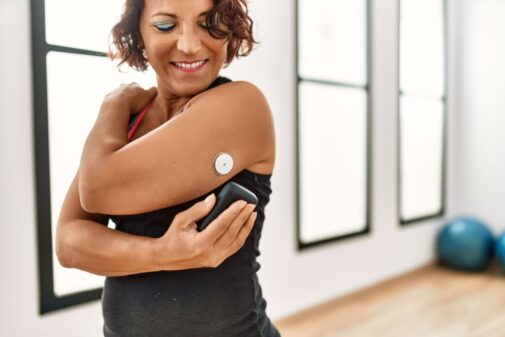Pee problems: When it’s time to see the doctor

It is just a bit ironic. This past week, I had my first ever surgical procedure. True, I am not a surgeon, so there is no irony in that. The irony I see is that as the medical director for the laboratory of an urology group in Chicago, I deal with about 60 urologists on a regular basis, and yet delayed the necessary urologic procedure for about, oh, six or eight years!
As is common for men of a certain age, my prostate gland was slowly encroaching upon and compressing the prostatic urethra, the tube that runs through the gland and carries urine from the bladder to “out there.” In laymen’s terms, it was getting pretty hard to pee. I had seen a few different urologists at about five year intervals, and all had told me that some day, probably sooner rather than later, I would need a procedure to get things moving again. Not seeing any benefit in doing today what I could put off until tomorrow, I ignored their warnings and just accepted the fact that I would be spending a few extra minutes each day standing in front of toilet, thinking of waterfalls and bubbling brooks, hoping that positive biofeedback would get things flowing.
And then about a month ago, the flow stopped as permanently as if it had hit the Hoover Dam. Inconveniently enough, my internist was on leave, but I knew which of my 60 urologist buddies he sent most of his patients to, so I gave Dr. Scott Tiplitsky, a urologist at Advocate Lutheran General Hospital in Park Ridge, Ill. a call, and we arranged a way to give me some relief. Urologists can do a magical job opening the floodgates with catheter tubes and balloons. With a little training, I have learned to do the magic myself–something I do not recommend for the squeamish or for easy fainters. And it is only a temporary remedy.
So a permanent solution needed to be found. My urologist and I discussed a variety of options, but in the end, we settled on a newer type of procedure that vaporizes the obstructing tissue but does relatively little damage to the prostate that is left behind. I was set April 5 at Advocate Lutheran General.
I had the procedure on that rainy Wednesday. Most patients are sent home immediately after the procedure, but because of a few kinks (kinks in my history, not kinks in my urethra,) I had an overnight stay followed by a few days resting semi-comfortably at home. A catheter was in place to ensure that things kept streaming along. The big test came Monday when the UroPartners team popped out the catheter. At that point, it was all up to me to pee. Dr. Tiplitsky let me know I should wait for a few hours and then see how it “goes.” And now, with a sigh of relief, I can joyously report that the dam has been broken and all is flowing well.
And how did this doctor do as a patient? I spent the first twenty-some years of my career as a pathologist in a community hospital, so the sights, sounds, rhythm and routine were somewhat familiar, but it is certainly different from a patient point of view. The good people at Advocate Lutheran General did a great job of helping me feel comfortable and treating me with kindness and respect, whether or not they knew I was a physician. The staff was uniformly polite, and every member, from housekeepers to nurses, assistants, volunteers and administrators, was sure to identify themselves and make it clear just what they were doing in my room at 4 in the morning. And as my wheelchair was pushed out the door on Thursday morning, there was even a woman cheering me on with a hearty “You’re going home-Yay!” I am not sure she is a hospital employee, but if she isn’t, I suggest that LGH give her some pom-poms, a cheerleader’s outfit and offer her a job!
I have written before of the many safety precautions we take in our lab to ensure the right result goes to the right patient. We bar code, color code, do manual double checks and with patient consent, do DNA identification verification. I was glad to see similar safety precautions in place at Lutheran General. I recited my name and birth date at least five times an hour. The 2D and 3D bar codes on my wrist band were scanned with virtually every contact with staff, and certainly every time any medication was being administered. I know that if my visit had been for an orthopedic procedure, the staff would have marked either my right or left knee to identify which side should be cut on. I don’t think that was necessary for my particular case–only one place for that cystoscope to go! By the way, if any of you are looking for an investment opportunity, alcohol-based hand wash would be a good bet. To prevent spread of infection, there is a lot of hand washing going on.
Kudos to my good friends and associates at UroPartners and my new friends at Advocate Lutheran General. I’m just glad that in my case, when it rained, it poured!
Related Posts
Comments
About the Author
Les Raff is the Medical Director of UroPartners Laboratory and has a regular blog on ChicagoNow at http://chicagonow.com/downsize-maybe.

















